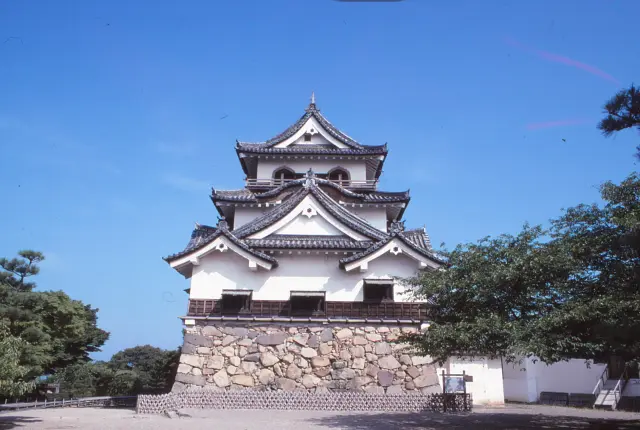 Search for Flights
Search for Flights
 Search for Hotels
Search for Hotels
 Check Exchange Rates
Check Exchange Rates
 Check the Weather
Check the Weather

Explore Sacred Enryakuji and the Streets of Sakamoto where Monks Live!
Last update
Mt. Hiei-Zan Enryaku-Ji is a holy site of Japanese Buddhism and it is registered as a World Cultural Heritage Site as a “Historic Monument of Ancient Kyoto.” Enryaku-Ji was built about 1,000 years ago, and it produced preeminent monks in Japanese Buddhism. Therefore, it not only had historical and cultural influence but also political influence. Also, the town of Sakamoto at the foot of the mountain prospered as the entrance and gateway town to Enryaku-Ji. During this tour, you will visit Enryaku-Ji and Sakamoto, enjoy the history of a Japanese faith and see the breathtaking scenery. Experience the magic of the community in a town where faith flourishes in serenity.
Photos

Hiei-Zan Enryaku-Ji

Sakamoto was once one of the busiest towns in Japan, serving as a gateway town for Hiei-Zan Enryaku-Ji and Hiyoshi Taisha and as a port town for shipping on Lake Biwa. Throughout the town, there are numerous retired monk’s quarters, which are run by Buddhist monks trained in Hiei-Zan, and the townscape is characterized by its many stone walls. An unbroken history that can only be seen here and glimpses of scenery surrounded by bountiful nature

Sakamoto Cable is a cable car route established in 1924. The distance of the route is 2,025 m, the longest operating distance out of all currently operating cars in Japan. Take in a view of Lake Biwa that grows ever more expansive the higher you climb.

Hiei-Zan Enryaku-Ji is at an elevation of 848 m and borders all areas of Hiei-Zan. It is also the head temple of the Tendai sect of Buddhism. Since its founding, it has produced numerous famous monks and played a central role in Buddhism in Japan. In 1994, Enryaku-Ji was registered as a UNESCO World Cultural Heritage Site as a “Historic Monument of Ancient Kyoto.” It is still a representative temple in Japanese Buddhism today.

A soba noodle shop operates within the grounds of Hiei-Zan Enryaku-Ji. At Hiei-Zan Enryaku-Ji, soba is beloved as the first food that monks eat after finishing a fast in their training. Delight in eminent regional specialties.

It is also a nationally designated site known for its appealing Japanese garden, including a clear stream and borrowed landscape. Having wavy mounds, five-story stone pagodas and other structures are also characteristics of the garden. Take in the enjoyable sights of a garden that is richly varied.

Hiyoshi Taisha is a Shinto shrine built on the eastern foot of Mt. Hiei-Zan. Once Enryaku-Ji was opened on Hiei-Zan, the shrine was also regarded as the protector of the Tendai sect and Enryaku-Ji. Because it guarded the capital of Kyoto, it is still believed to ward off bad luck and bring good luck when moving or traveling. You may wish to pray for your safe travels.
Information
- Minimum Number of Passengers
- 1 participant
- Maximum Capacity
- 6 participants
- Participation Restrictions
- Nothing in particular (those able to move along stairs and the mountain path on their own)
- Meeting and Exchange Areas
-
JR Hieizan Sakamoto Station
3-31 Sakamoto, Otsu City, Shiga Prefecture - Open Period
- Year-round
- Closed Period
- April 1, 2025–October 31, 2025
- Meeting Times and Business Hours
- 9:30 a.m.–4:30 p.m.
- Tour Schedule
- JR Hiei-Zan Sakamoto Station Sakamoto cityscape Sakamoto Cable Hiei-Zan Enryaku-Ji Honke Tsuruki Soba/Hiei-Zan Warodoten (Former) Chikurin-in Hiyoshi Taisha Osugichaya JR Hiei-Zan Sakamoto Station/( Train On foot)
- Required Time
- 420 minutes
- Provision of Meals
- Meals are provided
- Open to meal requests
- Not possible
- Universal accessibility
- Not possible
- Parking
- Yes (paid)
- Business name
- Biwako Otsu Tourism Association 077-528-2772 info@otsu.or.jp
- Notes
- - If the weather is poor on the day of the event, the route, including the method of transportation and stops, may change. - If you do not make it to the meeting spot on time depending on the means of transportation used, we may not be able to provide a full tour experience. - Be sure not to be late for your reservation. - There will be a lot of walking, so please wear clothing and shoes that are easy for you to walk in.
This basic information is current at the time of publication and is subject to change.
Please check the official website for the latest information.
Map
Nearby Spots

Hiyoshi Taisha Shrine
210 m
Mt. Hiei Hiking
460 m
Saikyo-ji Temple
1.24 km




